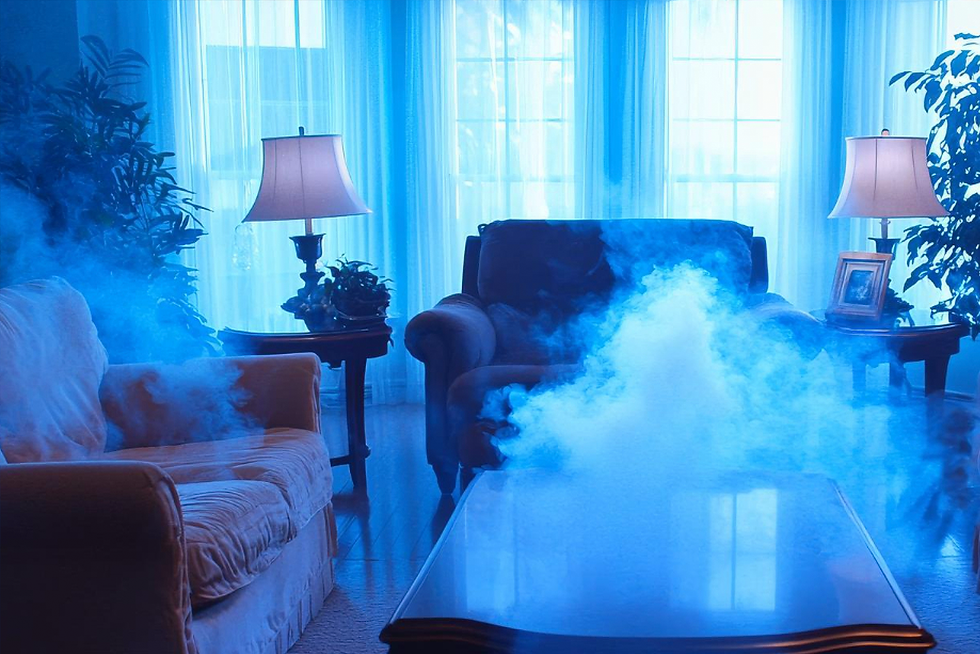Creating a Mold Resistant Home
- Corey Provencal

- Sep 22, 2010
- 3 min read
Mold can grow anywhere in your home. We’ve got tips for how to keep it at bay.
There is no such thing as a mold-proof home. Mold spores exist in the air inside our homes, but we can cohabit peacefully as long as those spores don’t find moisture and start growing. If they do, it’s only a matter of time before mold spreads, and once that happens, it can be difficult to nearly impossible to eradicate. There is a silver lining: you can’t eliminate mold, but you can discourage its growth. By taking steps to make your home mold resistant, you’ll avoid the headaches of remediation and repair, as well as the potential health problems mold can cause.
When we say mold is everywhere, it’s no hyperbole. All that mold needs to thrive is moisture, a food source, and warmth. The “food source” can be any number of household items or materials: bedding and draperies, upholstered furniture and carpeting, shower walls and windowsills, wallpaper and ceiling tiles. Before you start to imagine yourself surrounded by angry, hungry mold spores, remember these three basic steps you can take to make your home mold resistant:
1. Prevent moisture. 2. Ventilate. 3. Reduce humidity.
Whether your home is new or old, there are specific steps you can take to make it resistant to mold. Mold affects indoor air quality and can make homes difficult to sell. Follow these mold-prevention tips, and you’ll breathe easier, in more ways than one.
Tips for existing homes It’s important to remember that no action to make your home mold resistant will be successful if you have a perpetual moisture problem or if mold has already taken hold. Inspect your home thoroughly for problem areas, and keep in mind that mold can hide in places you can’t see, such as inside ductwork or above ceiling tiles. If you suspect you already have a problem, talk to a certified mold inspector to help resolve it before taking these steps to prevent mold growth.
1. Be vigilant of areas of potential moisture and clean up spills and repair leaks immediately, removing water-damaged furniture and fabrics if they cannot be dried out completely.
2. Use dehumidifiers to reduce humidity to 30 to 50 percent and fans to increase air flow in your home, especially if you live in a hot, humid climate.
3. Regularly clean and maintain roof gutters.
4. Regularly clean and maintain AC unit drip pans and drainage lines.
5. Vent moisture-producing appliances, like clothes dryers and stoves, to the outside.
6. Raise the air temperature in your home so moisture doesn’t end up on surfaces as condensation.
7. Open closet doors and doors between rooms and move furniture away from walls and corners to allow air to move freely through your home.
8. Ventilate crawl spaces, and install heavy-duty plastic sheeting over dirt to prevent moisture from coming up from the ground.
9. Add a mold retardant like Taheebo tea to houseplant water to stave off growth in soil and on leaves.
10.Clean and vacuum your home regularly, removing those tasty food sources, like dust particles, that mold feeds on.
Tips for new homes When starting from scratch, you may be better able to control the mold-resistance of your home. However, since more and more homes are being built with energy efficiency in mind, airflow is more restricted in new homes—and good circulation is crucial for preventing mold. Still, you can have a home that is energy efficient and mold resistant by following a few important tips.
1. Use mold resistant construction products, such as mold resistant drywall, which uses fiberglass instead of paper facing, and drywall tape; paint treated with an EPA-registered fungicide, which discourages growth on painted surfaces; mold resistant insulation, such as Nu-Wool; wood treated with anti-mold chemicals, such as FrameGuard’s; and mold resistant trim, caulk, and sealant.
2. Keep construction materials dry and mold-free before installation, and watch for construction defects that may lead to leaks or water entry.
3. Grade the land down and away from the home’s foundation.
4. Install a strong moisture barrier under concrete slabs and basement floors.
5. Waterproof concrete used for floors, exterior basement walls, and the foundation, such as with a crystalline waterproofing system, which allows concrete to breathe so moisture doesn’t accumulate.
6. Insulate pipes and water-supply lines to prevent cracks and leaks.
7. Install gutters that take water away from the house.
8. Equip the HVAC system with a filter or electronic air cleaner for catching airborne mold spores.
9. Install a programmable dehumidifier to reduce indoor humidity and exhaust fans to prevent moisture.
10. Avoid wall-to-wall carpeting, or install plastic sheeting and subflooring between carpeting and a concrete floor to prevent moisture.
More resources: • EPA’s guide to mold and moisture • Association of the Wall and Ceiling Industry • Responsible Solutions to Mold Coalition









Comments